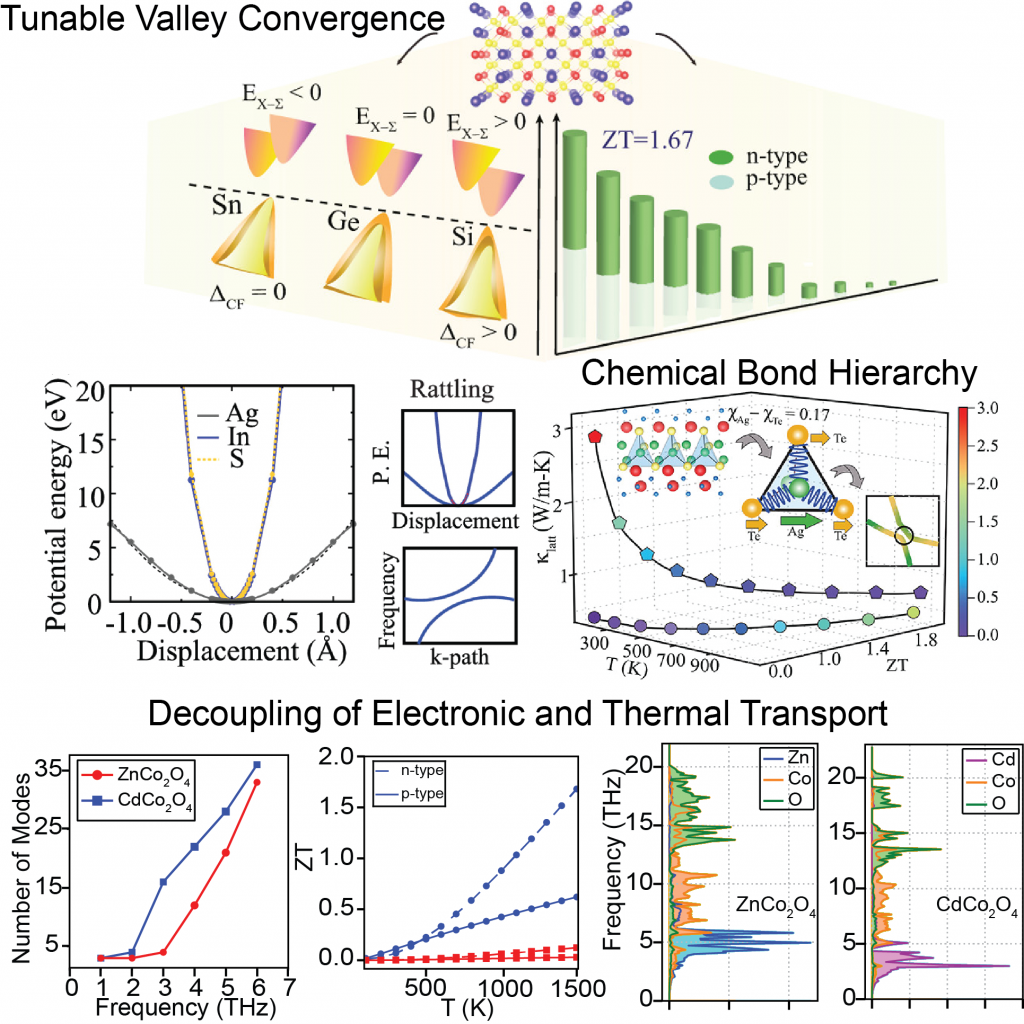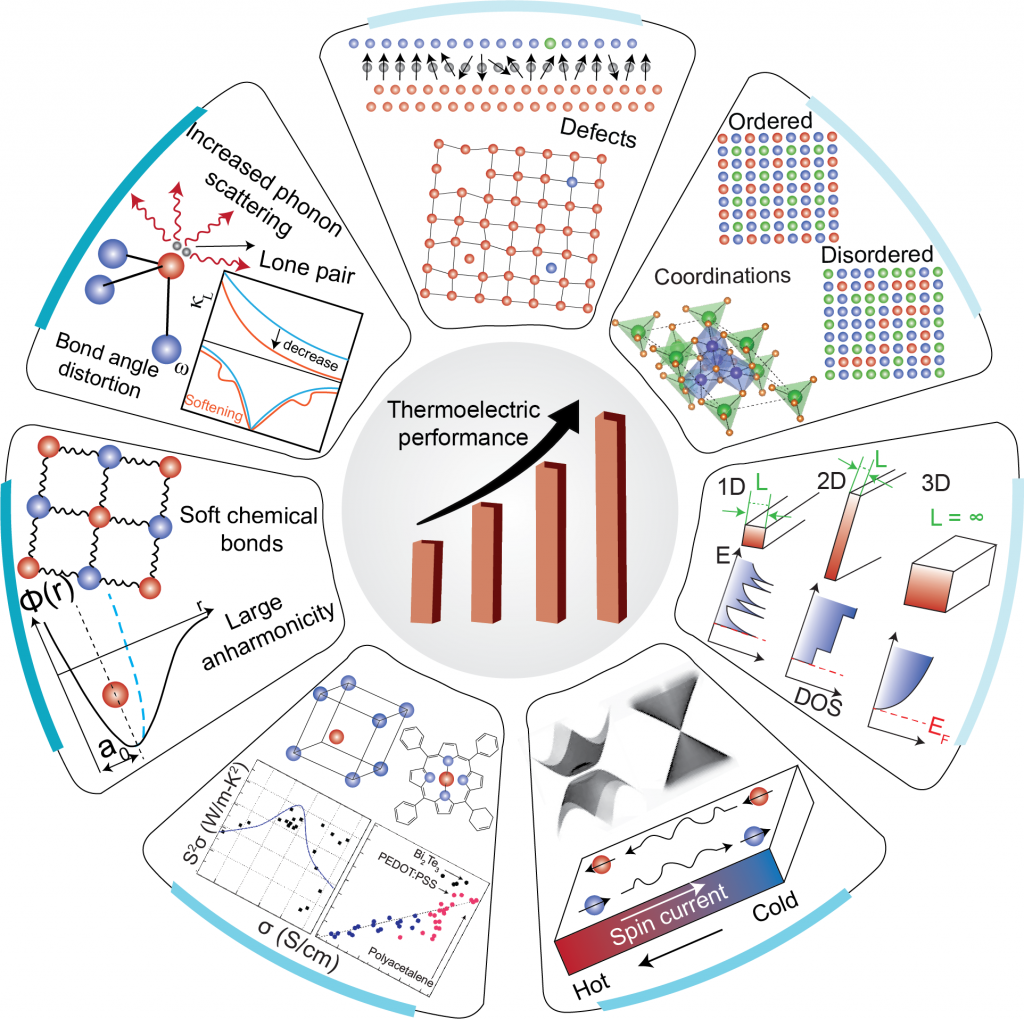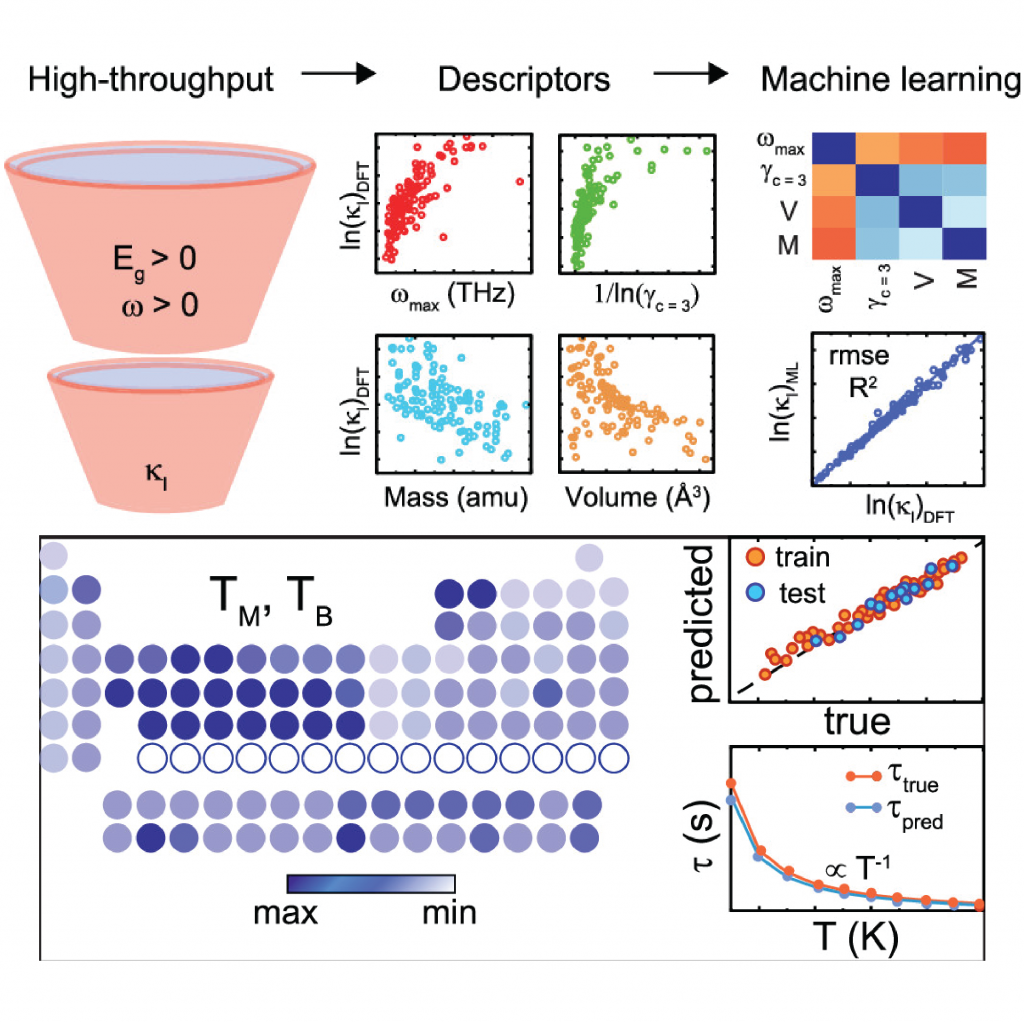Thermal Transport and Thermoelectrics

Understanding origin, effects and implications of thermal transport is of great interest for applications like energy devices and thermal management of electronics. The main control parameter of thermal transport is thermal conductivity of material, originating from scattering of phonons with different sources. By first principles density functional theory and Boltzmann transport theory we provide an explanation about the origin of striking variation of κlatt and its anisotropy in group-IV (Zr and Hf) and group-VI (Mo and W) TMDs. The lower thermal conductivity of group IV TMDs is substantiated by 4 times larger Grüneisen parameter (γ) and twice as large anharmonic scattering rate (Wanhar) as compared to the group-VI TMDs. The Born effective charges, which are very different for two class of materials, are the driving factor of this phenomena, as it quantifies interlayer van der Waals (vdW) interaction strengths. We report for the first time an inverse correlation between the strength of vdW interaction and anisotropy in thermal conductivity of these TMDs.
Decoupling the interdependence of electronic and thermal transport has been achieved by utilizing different cationic sites present in cubic spinel oxides. Electronic transport is influenced by the tetrahedrally coordinated atomic sites, whereas thermal transport is by the octahedrally coordinated atomic sites. Making use of this insight, CdCo2O4 material is proposed to have significantly high thermoelectric performance.
Our recent review article on thermoelectrics provides an overview of a wide plethora of thermoelectrics driven by several emerging concepts yet to be explored. Collectively unveiling the key approaches via structures, physics, and chemistry of materials to achieve superior energy conversion efficiency. Tuning crystal structures by varying dimensionality, controlling defect chemistry, and modifying atomic ordering in materials depict an effective breakthrough in designing next-generation thermoelectric materials. A broad overview of the advanced approaches provides guidance in designing new thermoelectric materials.

Reference
1. M. Mukherjee, A. Srivastava, and A. K. Singh, Recent Advances in Designing Thermoelectric Materials, J. Mater. Chem. C, 10, 12524-12555 (2022)
2. A. Srivastava, M. Mukherjee, and A. K. Singh, Decoupled atomic contribution boosted high thermoelectric performance in mixed cation spinel oxides ACo₂O₄, Appl. Phys. Lett., 120, 243901 (2022)
3. M. Mukherjee, S. Satsangi, and A. K. Singh, A Statistical Approach for the Rapid Prediction of Electron Relaxation Time Using Elemental Representatives, Chem. Mater., 32, 6507–6514, (2020)
4. T. Pandey, A. Nissimagoudar, A. Mishra, and A. K. Singh, Ultralow Thermal Conductivity and High Thermoelectric Figure of Merit in Mixed Valence In₅X₅Br (X = S, and Se) Compounds, J. Mater. Chem. A, 8, 13812-13819, (2020)
5. R. Juneja, and A. K. Singh, Unraveling the role of bonding chemistry in connecting electronic and thermal transport by machine learning, J. Mater. Chem. A 8, 8716-8721, (2020)
6. R. Juneja and A. K. Singh, Guided Patchwork Kriging to Develop Highly Transferable Thermal Conductivity Prediction Models, JPhys Materials, 3, 024006 (2020)
7. M. Mukherjee and A. K. Singh, Strong Chemical Bond Hierarchy Leading to Exceptionally High Thermoelectric Figure of Merit in Oxychalcogenide AgBiTeO, ACS Appl. Mater. Interfaces, 12, 8280-8287, (2020)
8. R. Juneja, and A. K. Singh, Rattling-Induced Ultra-low Thermal Conductivity Leading to Exceptional Thermoelectric Performance in AgIn5S8, ACS Appl. Mater. & Interfaces, 11, 33894-33900, (2019)
9. R. Juneja, G. Yumnam, S. Satsangi, and A. K. Singh, Coupling High-throughput Property Map to Machine Learning for Predicting Lattice Thermal Conductivity, Chem. Mater., 31, 14, 5145-5151, (2019)
10. M. Mukherjee, G. Yumnam, and A. K. Singh, High Thermoelectric Figure of Merit via Tunable Valley Convergence Coupled Low Thermal Conductivity in AIIBIVCV₂ Chalcopyrites J. Phys. Chem. C, 122, 29150 (2018)
11. G. Yamnam, T. Pandey, and A. K. Singh, Interplay of Structural and Bonding Characters in Thermal Conductivity and Born-Effective Charge of Transition Metal Dichalcogenides J. Phys. Chem. C 122, 2521 (2018)
12. R. Juneja, T. Pandey, and A. K. Singh, High Thermoelectric Performance in n-doped Silicon-Based Chalcogenide Si2Te3, Chem Mater. 29, 3723 (2017)
- 13. G. Yumnam, T. Pandey, and A. K. Singh, High temperature Thermoelectric Properties of Zr and Hf Based Transition Metal Dichalcogenides: A First Principles Study, J. Chem. Phys. 143, 234704 (2015)
- 14. T. Pandey, and A. K. Singh, Simultaneous enhancement of electrical conductivity and thermopower in Bi2S3under hydrostatic pressure, J. Mater. Chem. C, 4, 1979 (2016)



